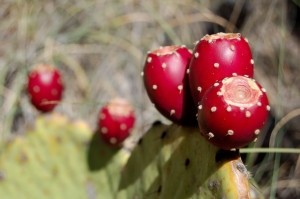Cactus pear pads linked to lower diabetes risk
reduce blood sugar rises after a meal by up to 50 per cent,
suggests a new study that may have implications for diabetes
management.
The new study, published in this month's issue of Diabetes Care , looked at the effect of the cactus pear, known locally as nopales, on blood sugar levels when eaten with regular Mexican fodder like burritos and quesadillas.
"Consumption of nopales (prickly pear cactus pads) in middle and low socioeconomic populations of central and southern Mexico is generally three times weekly," explained lead author Montserrat Bacardi-Gascon.
"The purpose of this study was to estimate the glycemic index of three usual Mexican breakfasts and to measure the effect of adding cactus pads (nopales) on postprandial glucose response in type 2 diabetic subjects."
An estimated 19 million people are affected by diabetes in the EU 25, equal to four per cent of the total population.
This figure is projected to increase to 26 million by 2030.
In the US, there are over 20 million people with diabetes, equal to seven per cent of the population.
The total costs are thought to be as much as $132bn, with $92bn being direct medication costs, according to 2002 American Diabetes Association figures.
The researchers recruited 36 volunteers (average BMI was 25 kg per sq. m) with type-2 diabetes aged between 47 and 72 and, after an 18-hour fast, assigned them to eat a meal of scrambled egg and tomato burritos, chilaquiles (cheese, beans and tomato sauce with corn tortillas), or quesadillas with avocados and pinto beans, with or without 85 grams of prickly pear cactus pads.
Bacardi-Gascon and co-workers from the Universidad Autonoma de Baja California report that blood sugar levels were reduced in all meal types when nopales were consumed simultaneously, compared to those not supplemented with the cactus pear.
Reductions also varied depending on the meal, with nopales plus quesadillas being associated with a 48 reduction, nopales plus chilaquiles associated with a 30 per cent reduction, and nopales plus burritos associated with a 20 per cent reduction.
"The promising results shown with these typical Mexican breakfasts provide Mexican patients with a broader and more culturally based choice for the management of diabetes," concluded the researchers This is not the first time that cactus pear has been linked to improvements for diabetes-related health.
BioSerae recently conducted a trial to assess its NeOpuntia extract of prickly pear cactus on metabolic syndrome (MetS), a condition characterised by central obesity, hypertension, and disturbed glucose and insulin metabolism.
The syndrome has been linked to increased risks of both type-2 diabetes and CVD.
Source: Diabetes Care May 2007, Volume 30, Pages 1264-1265 "Lowering Effect on Postprandial Glycemic Response of Nopales Added to Mexican Breakfasts" Authors: M. Bacardi-Gascon, D. Duenas-Mena, and A. Jimenez-Cruz












